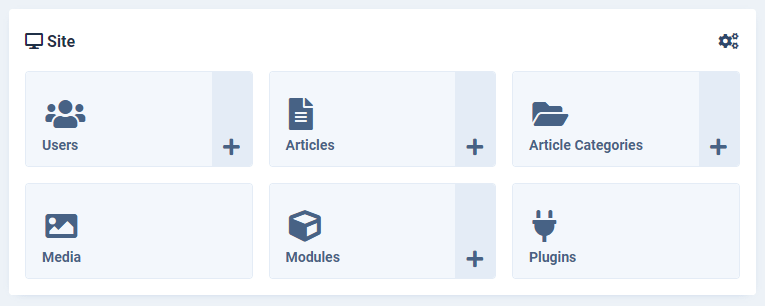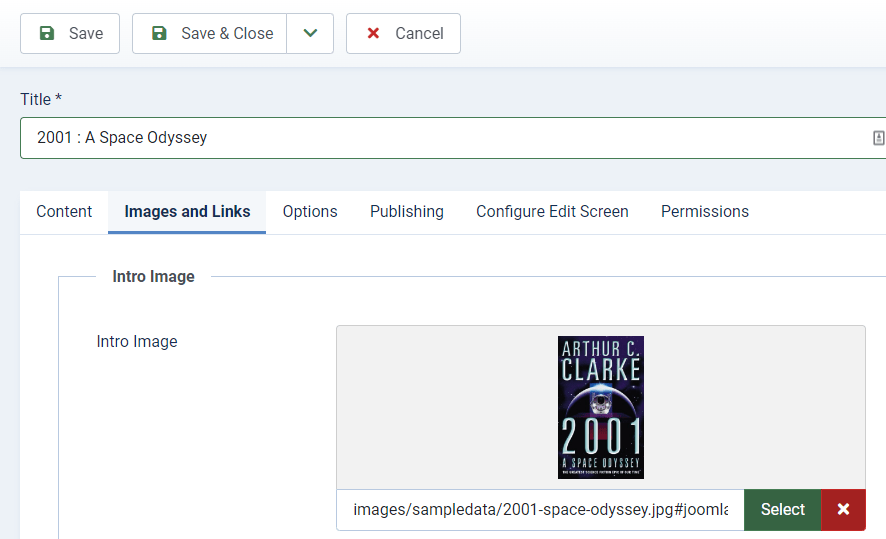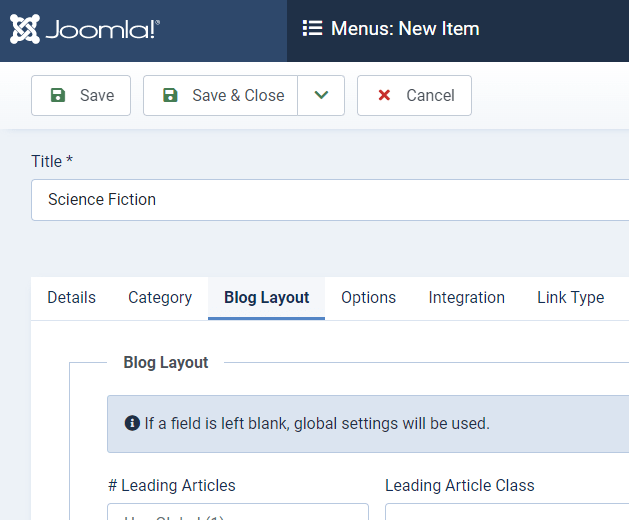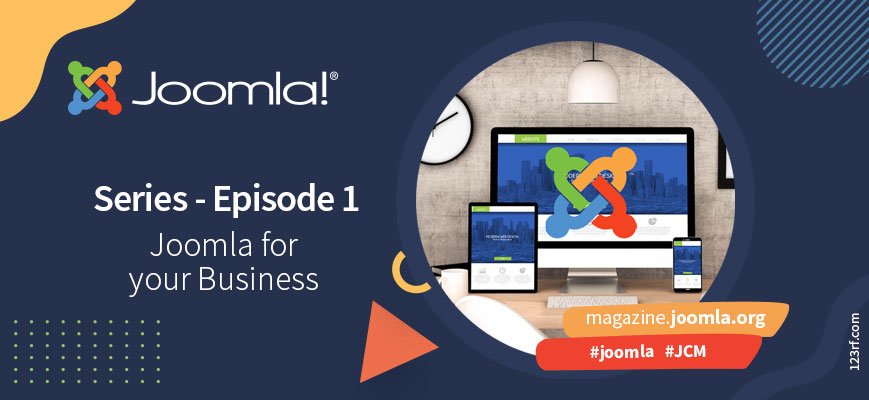I create the website for my business for free with Joomla - Part 1
Create a website for your business, it's vital nowadays. But often, we have neither the budget nor the skills. This tutorials serie will guide you until you succeed on your own!
If you start to read this article, it's because the matter of creating a website interests you and that - for the challenge, for the intellectual curiosity or for the sake of savings - you would like to create it on your own. It still seems impossible to you for the moment but I bet you that after reading this series of tutorials, you will have made your website without anyone's help!
The purpose of these articles is to demonstrate that it is quite possible to create a website yourself for a professional business using Joomla, a powerful, secure and free content management tool. Because yes, everything you will use and learn to do with these articles will only cost you a little of your time. And these days, that's downright good news!
What you can and cannot do
To train yourself (and prove I'm right), this serie of articles will help you to create a bookstore website by yourself.
Of course, you can replace "bookstore" with anything else, the principle will remain the same.
As in real life, your virtual bookstore will offer several literary genres - detective novels, science fiction, children's books, etc. - and for each book presented, you will be able to display the following informations: the cover of the book, the literary genre, the author's name, the ISBN code, the number of pages, the publisher, the sale price, etc.
Of course, it's possible to go much further but to start, we will limit ourselves to these data.
Your visitors will be able to see all the books from a specific literary genre, all the books by the same author, search for books, etc. Exactly like in a real bookstore!
Since you have decided to create your website by yourself, we will also make sure that you are able to manage it on a daily basis. That is to say that adding new books, editing the data entered, publishing specific offers, etc. can be done easily by people with no particular knowledge or training in Web. Concretely, this means that we will avoid convoluted, cumbersome extensions that require an unreasonable learning curve and additional maintenance.
Why make it heavy and complicated when it's possible to make it simple and fast only with Joomla?
On the other hand, the website that you will be able to create thanks to these tutorials will not allow you to sell online or to offer to reserve books for your visitors. This is not the subject of this self-training, but be aware that these features can be added later by installing appropriate extensions.
Voila, you know what you will learn to do by continuing to read this serie of tutorials.
Now that we have clearly defined the scope of your project, you will see how your website must be organized for it to be successful.
A bookstore, how does it work?
If you go to bookstores or libraries, schematically they are shelves filled with books classified by literary genre: romantics novels, crime novels, philosophy, comics, poetry, etc.
Then, the books are generally arranged by author to make it easier for customers to find them. If you waste time looking for the latest Goncourt Prize on the shelves of a bookstore, it is because this bookstore is not organized and not optimized. It's therefore necessary to remain coherent, logical and above all not to seek to make things complicated.
We are going to keep this ranking logic that works, it will give us a beginning of architecture and organization for the website of your bookstore.
But come to think of it, a bookstore is not just about books. We also talk about authors, publishers, etc. Your website must therefore work like a real bookstore. And that's exactly what you can do.
As in a real bookstore, you will be able to display everything around a book, such as other books on the same subject, other books by the same author, other books by the same publisher, etc.
As in a real bookstore, you may need to highlight certain promotions or seasonal themes (literary prizes, Back to school, etc.). No worries, you will learn how to do it very easily.
As in a real bookstore, your visitors will have the opportunity to ask for help in finding a particular book or author. Except that on your site, it's the search engine that will answer them.
You got the idea.
So that your visitors are not lost when they arrive at your virtual bookstore, it must work exactly the same way as a physical bookstore.
We will now see how to create, organize and implement these functionalities using Joomla.
Now, you'll create the website for your business
To begin with, let's try to work rationally and consistently and translate the ranking of books into "Joomla" terms.
It's very simple: a book is an article that is placed in a literary genre (a category). And that's it, you're done!
Okay, I admit that it's a bit succinct but it's pretty well summarized. And you will see that ultimately, it's not more complicated than that.
First, you will create your free website with Joomla in less than 10 minutes.
Go to launch.joomla.org and follow the steps presented in this video:
Congratulations, your website is (almost) finished! Okay, there's still a bit of work to do.
Now you will create your first literary genre, add your first book to it and display it on your virtual bookstore.
For this, open the admin panel of your Joomla website at the following address https://name-of-your-website.joomla.com/administrator and log in.
To begin, you will create a first category of articles. I remind you that the categories of articles correspond to the literary genres of your bookshop.
From the Home Dashboard, click Article Categories in the Site panel.

Click on the green button New on the top of the page.
In the Title field, indicate the name of your category (literary genre). For example: science fiction.
Then, click on the button Save & Close.

Well, it's not more complicated than that.
Now, let's add our first book by creating a new article in Joomla.
From the Home Dashboard, click on Articles in the Site panel.
Click on the green button New on the top of the page.
Fill in the following fields as follows:
- Title: book title
- Text: book summary
- Tags: Book's publisher
Open the Images and Links tab and fill in the following fields:
- Intro Image: book cover thumbnail. This image will be used on the category page.
- Full Article Image: book cover image. This image will be displayed in the body of the article to present the book.
For now, you will stick to these data but rest assured, you will complete them in the next episode.
Click then on the button Save & Close.

It's already almost finished for this first part. All you have to do now is display your book on your virtual bookstore.
To do this, click on Menus in the left side menu, then click on Main menu .
Click on the green button New on the top of the page.
Fill in the following fields as follows:
- Title: indicate here the name of the category that you created previously (science fiction, in our example).
- Click on the blue button Select then click on Articles and select Category Blog
- Choose a Category: choose the category that you created previously (science fiction, in our example).
Note that in the Blog Layout tab, you have the possibility to configure how Joomla will display your blog. Feel free to experiment to find the setting that suits you.

Click on the button Save & Close.
That's it, you've finished the first part.
You have successfully created your website with Joomla, created an article category, added a new article and displayed it on your website. And for free, as promised!
Now, you can create as much categories as needed and add your articles in each of them.
I'm proud of you because at the beginning of this article, admit that you didn't think you could do it. So try to imagine what you will be able to do when you have read and completed all the tutorials in this series :)
In the next episode, you will add important information to the books pages such as the author name, the sale price, the ISBN code, the number of pages, the publisher, the publication year, etc. and you will display these data on the book's presentation page.
And because authors are important to a bookstore, you'll learn how to create them a dedicated page where their biography and bibliography will be displayed.
See you in November!
Some articles published on the Joomla Community Magazine represent the personal opinion or experience of the Author on the specific topic and might not be aligned to the official position of the Joomla Project
By accepting you will be accessing a service provided by a third-party external to https://magazine.joomla.org/
 Community Magazine
Community Magazine 
Comments 3
Thank you, Daniel. This is a rare gem of an article—a practical step-by-step tutorial for beginners to show how one can build a business website using the basic building blocks that come out-of-the-box with Joomla! I’m looking forward to more articles in this series and I will recommend them to people who ask the most obvious question, “What can I do with Joomla?”
I’ve been a reader of the Jooma Community Magazine for many years and, without meaning any offence, many of the articles go right over my head; a lot of articles start at the deep end of the pool and expect one to be an expert swimmer to be able to wade through them. I’m not saying that the JCM doesn’t have something for everyone but, as your “typical user”, I like to read more of these “how to” articles instead of puff pieces about what some of the teams have been doing. I like stories; I don’t like death-by-Powerpoint marketing: dot-point lists of things without connecting sentences and “doing words”.
Every now and then the JCM produces these rare finds—these practical guides that beginners can read without having to search the internet to translate technical terms into a language one can easily understand (or worse, read the article and discover that they would never, in a million years, be able to do whatever the article was about)! People learn best, and retain what they learn longer, through “show and tell” … not “tell and do”.
Thanks so much Monsieur Michael, i really appreciate your comment.
I would say the best way to write such content is to think as the readers: what they expect, what they need, what they want, etc.
Then, it's a bit easier to write in a way beginners and readers like.
Good news, there'll be 4 others episodes
Best regards from Brittany!
If you, like Michael, are looking for beginner tutorials or step-by-step guides, have a look at our Explore the Core series: https://magazine.joomla.org/all-issues/tags/explore-the-core, or our tutorials https://magazine.joomla.org/all-issues/tags/tutorial!